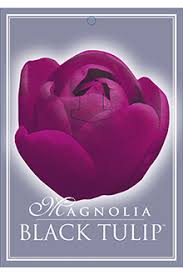With spring on the way, it’s hard not to get excited about the new happenings in the garden. In fact, I think that one of the best ways to experience the seasonal transition of winter to spring, is to watch the beginnings of magnolias and beautiful spring blossoms starting to open, and brighten a wintery garden.
When I think of spring, I’m reminded of a small, unassuming house on a fairly busy stretch of road that I travel often. Most of the year, I merely glance at the garden as I drive past but, in late winter, it becomes the best-dressed house on the block. Its rise in status is due to a magnolia, and the gorgeous spring blossoms blooming in the front yard.
The magnolia is one of the large-flowering varieties, and it is truly spectacular, with large-petalled blooms. The tree looks as if a flock of pink and white birds has just alighted in its branches. I savor every minute of its flowering, from the appearance of the first large floppy pink petal, to the sad day the wind blows the last flowers from the tree, and it retreats into green leafiness. The spring blossoms form a beautiful white hazy backdrop for the magnificent magnolia, and together they stop traffic.
Both Magnolias and spring blossoms flower in late winter or spring, before they regain their leaves. This eruption of flowers, on previously bare branches, is not only uplifting for the garden, but also for our spirits.
MAGNOLIAS
Magnolias are so magnificent, particularly for their cup-shaped blooms on bare grey stems. These blooms frame perfectly against the muted tones of the late winter and early spring garden. It’s for this reason that they are often regarded as garden aristocrats, with their big, elegant flowers putting them in a class of quality above most other plants.
Some Magnolia varieties, that stop traffic, include Soulangeana, Nigra, Elizabeth, Felix, Vulcan, Black Tulip and Yulan. These varieties begin to bloom when the tree is just a few years old, and several metres high. Mature specimens can reach 3-5m high.
They’re not overly fussy, and can be grown in a range of soil types. However, if given the choice, they prefer a deep acidic soil, with regular mulching and water in the warmer and harsher months. I find that a sunny spot, with shelter in summer from fierce afternoon sun and hot winds, (or northern or eastern aspect) is best.

SPRING BLOSSOMS
Most people are familiar with Magnolias, although a question I am often asked is “what is a spring blossom?” It’s just another word for a flower, but in this case it refers to the flowers of the trees in the orchards – almonds, peaches, nectarines, apples and pears. They include both fruiting and ornamental varieties, and range in colour from white, pink, red, and even to striped.
In terms of variety, Prunus blossom trees are some of the hardiest trees you’ll ever find (plum, almond, peach, nectarine). They love the sun and a reasonable amount of drainage. Flowers can be pink, white or mottled shades, single through to double, and in a range of sizes. The often-prolific flowering habit makes them excellent as small- to medium-sized specimen trees, and their versatility ensures that they can be used in a variety of applications.
For a large size garden, or for a screening-tree down a fence line, look out for a fastigiate pear tree, or Pyrus. These are trained into a skinny formation, rather than spreading out. They mainly flower white in colour.
In a smaller garden, a Malus or flowering crab apple, might suit better. Crabapples are closely related to apple trees – indeed, both fall into the same genus of Malus. Like the apple, Japanese crabapple has pink buds that open to white. After flowering, small apple-like fruits form. These are called ‘crabs’, and can be used when they are ripe to make a fragrant jelly-like jam
Cherry and apricot trees are among the most desirable of all the blossom trees. However, these do best in climates with cold winters and mild summers, and so are unfortunately generally not suitable in the local area.
Select blossom trees by their flowering time, and also their size. Plant the trees where they’ll be sheltered from gusty winter, and early spring winds. They do best in a spot with good deep soils and full sun. Fertilise these trees in spring, as their new growth returns.
Magnolias and spring blossoms are showstoppers. We’ve got so many varieties of both at Wingham Nursery suitable for all landscapes and applications. So, if you love them and are stuck on deciding, or need help finding something suitable, come in and see us. Already the Magnolia ‘Black Tulip’ and Prunus ‘Nigra’ are proving to be favourites this year, and will shortly be looking beautiful. Well worth a gander.

Caitlin Sawyer
Wingham Nursery and Florist
65534570
